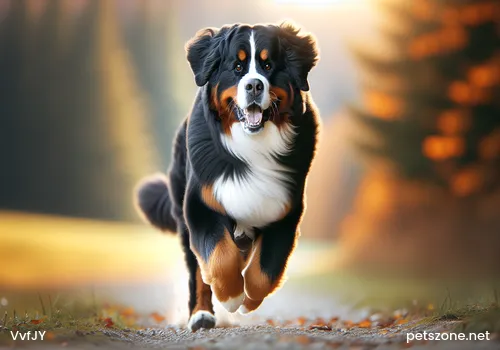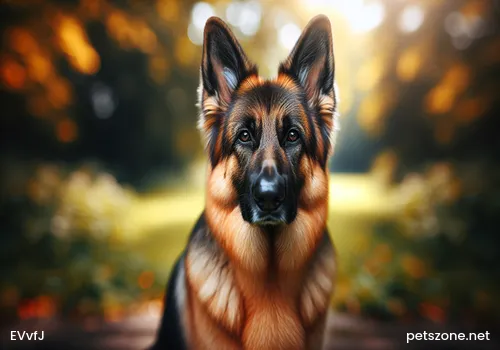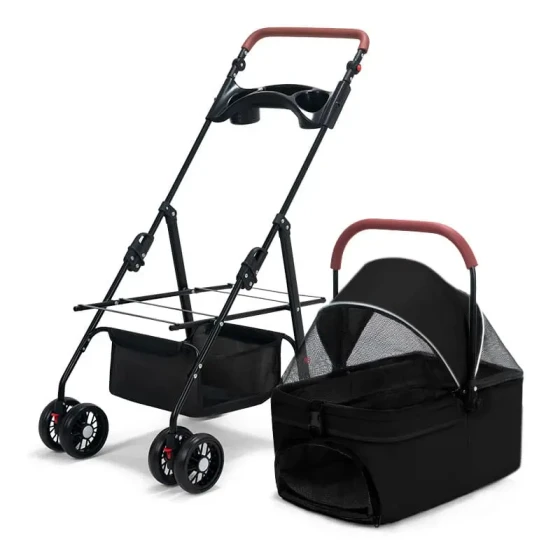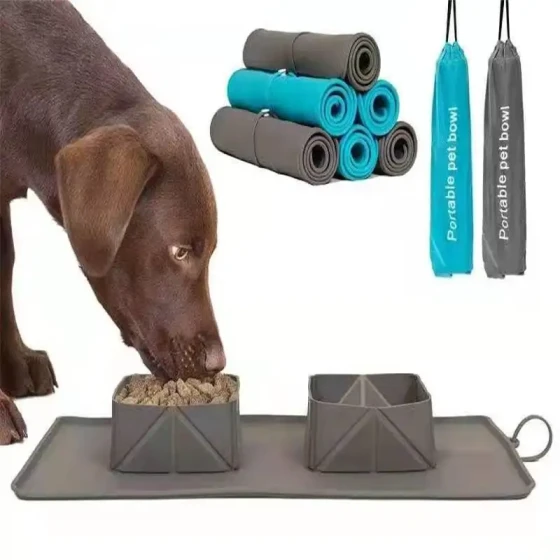Analysis of the Differences Between White Poodles and Bichons
Many people cannot distinguish between Bichons and white Poodles, especially now that many dog dealers crossbreed these two breeds to increase production, selling them as either Bichons or tail-docked Poodles. For beginners who cannot tell these two breeds apart, it is easy to be deceived. I will comprehensively analyze the differences between these two dog breeds from the following aspects.

White Poodle
1. Coat Color
Poodle: Red, chocolate, black, white, apricot, gray, blue, etc.
Bichon: White.
2. Coat Texture
Poodle: The coat is curly, naturally coarse in texture, and densely covers the whole body. Young Poodles have relatively straighter hair.
Bichon: The hair is soft, with a feel like velvet or suede, and dense. Young Bichons’ hair is curlier.
3. Eyes
Poodle: Oval and almond-shaped, with wide eye spacing.
Bichon: Eyes are round; the outer corner of the eye and the tip of the nose form a triangle. Bichons’ eyes appear larger than those of Poodles.
4. Head
Poodle: Relatively smaller when viewed from the front.
Bichon: Relatively larger when viewed from the front.
5. Ears
Poodle: Large ears, positioned at the same level or slightly lower than the eyes. The ears are not as large and are thinner than those of Bichons. Many white Poodles have ear hair color different from the back coat.
Bichon: Small ears, slightly higher than the eye level, covered with long, wavy hair. The ears are the same color as the coat, quite large, wide, and thick.

Bichon (Detailed Introduction)
6. Mouth
Poodle: Characterized by a long, pointed, slightly upturned mouth. The length of the muzzle depression equals the distance from the muzzle depression to the occiput. It is clearer to observe in clean-faced Poodles; for those without, you can feel the face shape by hand through the muzzle hair.
Bichon: Much shorter mouth compared to the Poodle, wider face, and wider bite. The length of the muzzle depression is 3/5 of the distance from the muzzle depression to the occiput. Additionally, Bichons have a unique "charming smile"—gently parting the lip hair reveals a different lip line from Poodles.
7. Body Size
Poodle: Legs are relatively longer, height and body length are equal, forming a square shape. At 2 months old, Poodles are slightly larger (excluding toy white Poodles).
Bichon: Legs are somewhat shorter and sturdier, appearing rounder. Body length is 1/4 longer than height, forming a rectangular shape. At 2 months old, Bichons are smaller than Poodles.
8. Tail
Poodle: Tail is docked and trimmed into a ball shape, straight tail; if undocked, the tail does not curl over the back. The end of the Poodle’s tail is thinner with noticeably sparse hair.
Bichon: Tail is not docked, long, and carried over the back. Bichons have thicker tails with dense hair.
9. Bone Mass
Poodle: Very light, noticeable feeling.
Bichon: Heavy and solid.
10. Temperament
Poodle: Very intelligent, obedient, and agile.
Bichon: More straightforward and clingy, gentle in temperament. Bichons are friendly, lively, intelligent, with excellent memory, and perform various amusing tricks. However, they can be fierce toward strangers.
They have long lived alongside humans, are greatly dependent on people, very friendly, and make excellent family companion dogs. The only downside is they require frequent grooming, which takes up considerable daily maintenance time.
11. Temperament and Image
Bichon: Quite individualistic, naturally lively and freedom-loving, bringing endless joy to owners. Their soft, curly coat needs trimming to display their beautiful, charming dark eyes and the rounded features of the body and head. When still, they look like fluffy, white toys to children; when moving, they resemble puffed cotton candy.
Poodle: An active, alert, and elegantly moving breed, possessing good body proportions and nimble actions, showing a confident posture. After traditional trimming and careful grooming, Poodles exhibit an innate unique and noble temperament.



